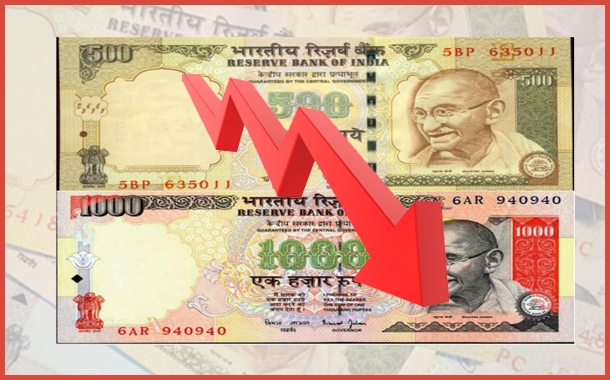It’s close to a month since the two top value notes are off – Rs. 1000 and Rs. 500 – and the waves of impact continues to make a fuss in almost all the walks of life, right from a kirana shop to large showrooms and shopping malls.
The cause, as denoted, may be good but the pause it created doesn’t seem to break free as expected by the people or as assured by the authorities.
While the day-to-day essential commodities like provisions and utility services are taken care of mainly due to the point of survival, the white goods such as televisions, refrigerators and washing machines face a slum as much as 70% as a good portion of the market is drive by cash, as observed by the experts.
The pinch in malls and restaurants is visible with a drop of about 30% footfalls during the weekdays and 15% footfalls during the weekends.
It’s quite inevitable that the fallout had spread its hold on the media too, where the prime USP is the sale of goods and the buying power of the consumers across the country and the advertisers and their inclination towards various genres of the media sphere. It is a sensitive pace balanced between the brands and the media tools.
It is evident that the impact, due to the fallout, scales up to the tune of about 70% slump on sale of goods as reported. Obviously, almost all the brands are struggling to get a hold and look forward to clear the dust off their hooks. So the question of media planning, ad schedules, sponsoring and buying media space for spots have become next to the secondary issues. ROs (Release Orders) raised to position their respective brands in the media outlets such as print, radio and television were either withheld or cancelled.
The trend of cancellation of ROs were openly visible in the form of hugely lower volume of Free Commercial Time (FCT) or volume of advertisements being carried in leading Broadcast Networks across the markets that are much lesser than TRAI’s recommended levels, though the platform like Mobile e-valets and e-commerce players are trying to make use of the situation by increasing their spending. However, it is hardly enough to match with the dropping numbers of other sector. The Countries largest advertiser HUL has with-held its December month ROs and reduced its ad-spending by 50%.
Paying through any medium or any mode may be an easy task for those who play the monetary game from the upper deck of the society. But the consumer market relies on the largely on the larger part of the consumers who emerge from the middle-class, be it upper, medium, or lower. Relatively, the brands rely on this part of the consumer segment and the media relies on the brands. It is a chain reaction that goes on, waiting to be resolved.
The media sphere looks forward to the beginning of time, when the tides of demonetisation die down and the queues in the banks and ATMs fade out which would pave way for a fruitful commercial take off.
Despite all this GroypM’s This Year Next Year: 2017 has predicted that still India will be one of the Fast Track growth market with its ad-spend growth projected at 12.5%

















